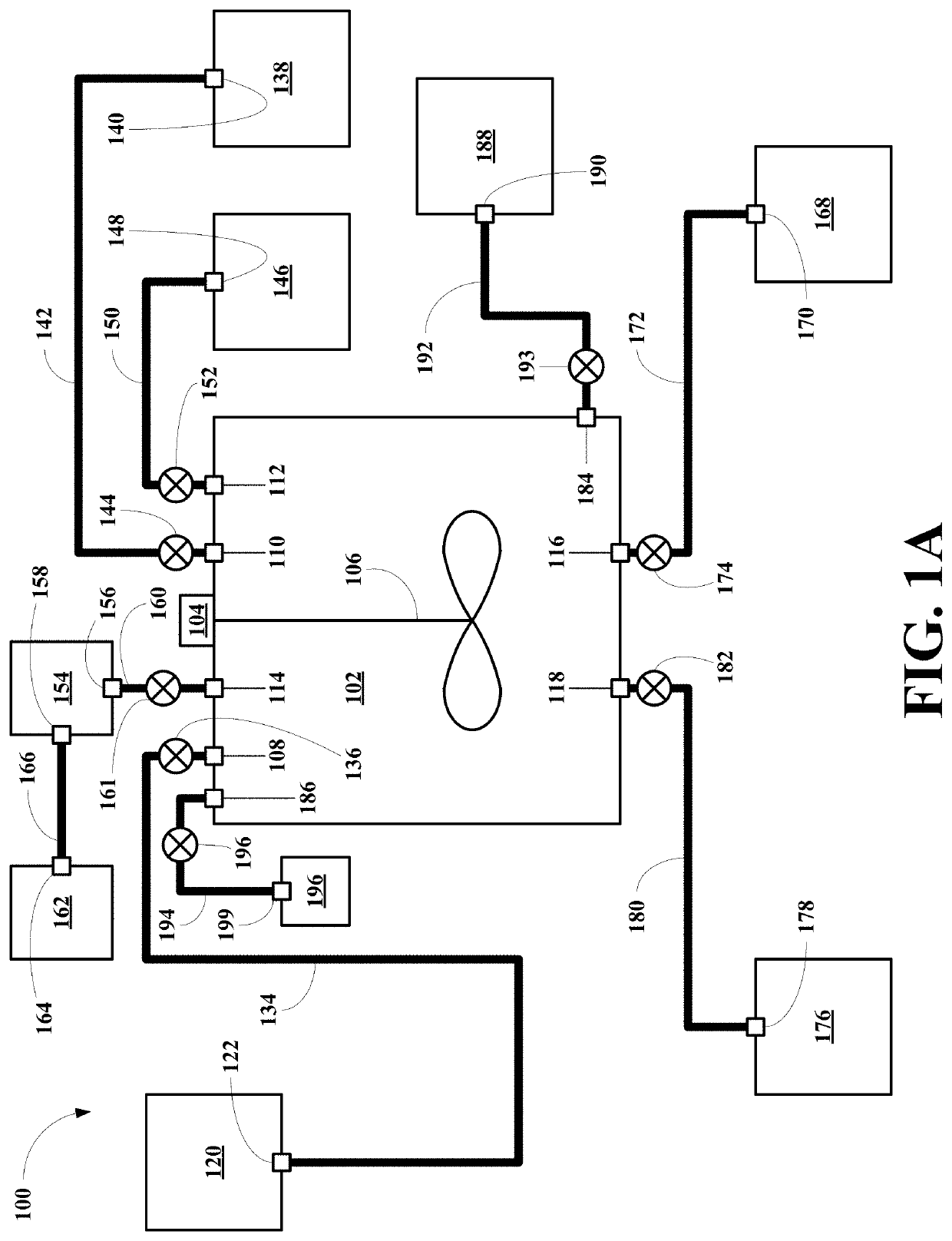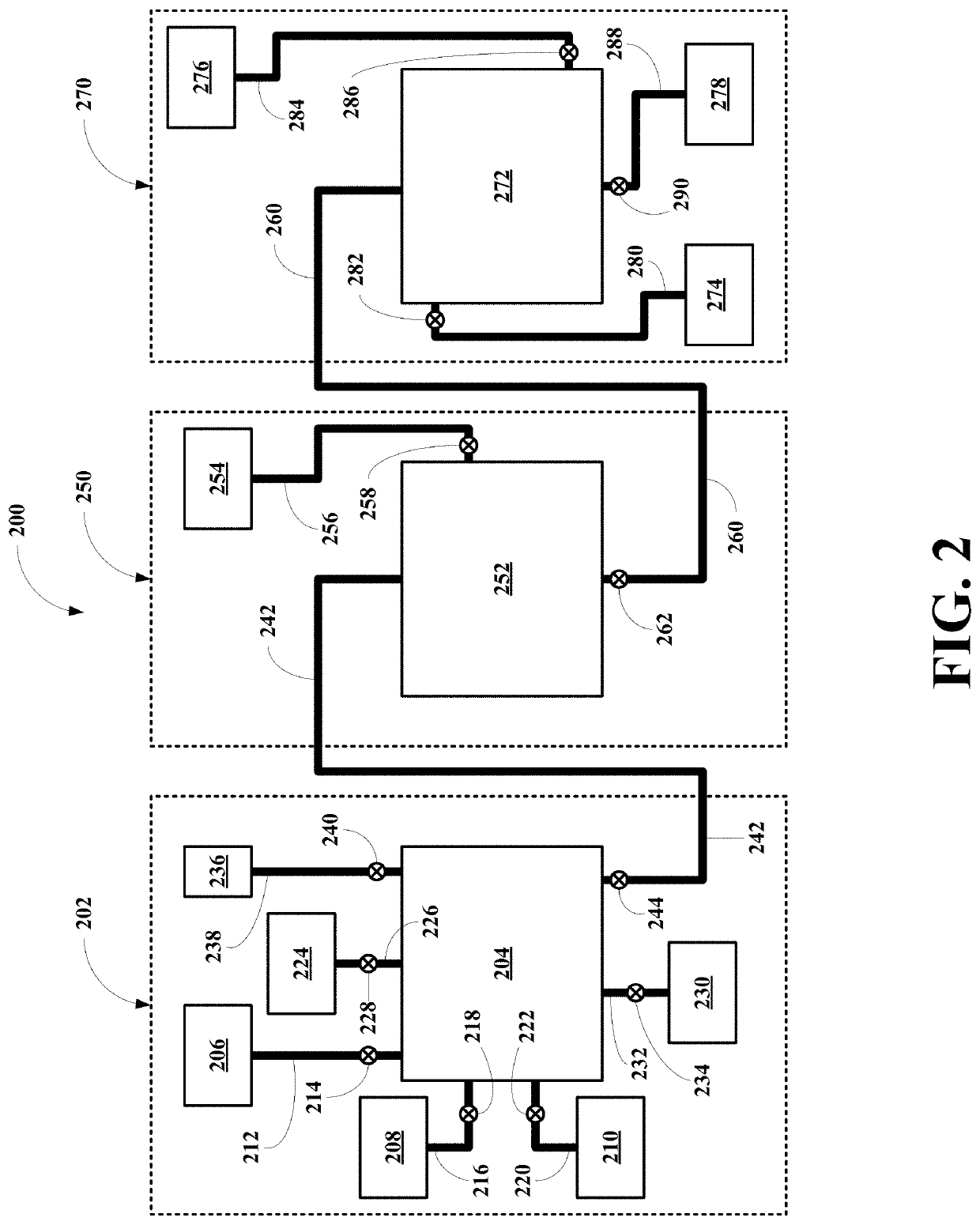Process for the recovery of rare earth metals from permanent magnets
a technology of rare earth metals and permanent magnets, applied in the field of rare earth metal recovery process from permanent magnets, can solve the problems of large amount of chemicals required in hydrometallurgical processes, significant environmental and economic impacts, and large use of strong acids and large amounts of chemicals, so as to achieve the effect of ensuring magnetic removal
- Summary
- Abstract
- Description
- Claims
- Application Information
AI Technical Summary
Benefits of technology
Problems solved by technology
Method used
Image
Examples
first embodiment
[0045]Referring now to FIG. 1A, a first embodiment of system of this invention, generally 100, is shown to include a heated reaction vessel 102 including a motor 104 and a paddle stirrer 106. The reaction vessel 102 also includes a REM containing magnet material inlet 108, a water inlet 110 and a formic acid inlet 112. The reaction vessel 102 also includes a gas outlet 114, a waste liquid outlet 116 and a REM product outlet 118.
[0046]The system 100 also includes a REM containing magnet material source vessel 120 having a REM containing magnet material outlet 122. The outlet 122 is connected to the inlet 108 via a REM containing magnet material conduit 134 having a REM containing magnet material conduit valve 136.
[0047]The system 100 also includes a water source vessel 138 having a water outlet 140. The water outlet 140 is connected to the water inlet 110 via a water conduit 142 having a water conduit valve 144. The system 100 also includes a formic acid source vessel 146 having a fo...
second embodiment
[0052]Referring now to FIG. 1B, a first embodiment of system of this invention, generally 100, is shown to include a heated reaction vessel 102 including a motor 104 and a paddle stirrer 106. The reaction vessel 102 also includes a particulate REM containing magnet material inlet 108, a water inlet 110 and a formic acid inlet 112. The reaction vessel 102 also includes a gas outlet 114, a waste liquid outlet 116 and a REM product outlet 118.
[0053]The system 100 also includes a REM containing magnet material source vessel 120 having a REM containing magnet material outlet 122. The system 100 also includes a commutating unit 124 having a REM containing magnet material inlet 126 and a particulate REM containing magnet material outlet 128. The REM containing magnet material outlet 122 is connected to the magnet inlet 126 via a magnet conduit 130 having a magnet conduit valve 132. The particulate magnet outlet 128 is connected to the particulate magnet inlet 108 via a particulate magnet c...
third embodiment
[0059]Referring now to FIG. 2, a first embodiment of system of this invention, generally 200, is shown to include a reaction subsystem 202, a separation subsystem 250, and an extraction subsystem 270.
[0060]Reaction Subsystem
[0061]The reaction subsystem 202 includes a single reaction vessel 204, a REM containing magnet material source vessel 206, a formic acid source vessel 208, and a water source vessel 210. The magnet material source vessel 206 is connected to the reaction vessel 204 via a magnet material conduit 212 having a magnet material valve 214. The formic acid source vessel 208 is connected to the reaction vessel 204 via a formic aid conduit 216 having a formic acid valve 218. The water source vessel 210 is connected to the reaction vessel 204 via a water conduit 220 having a water valve 222. The reaction vessel 204 also includes a hydrogen gas utilization unit 224 connected to the reaction vessel 204 via a hydrogen gas conduit 226 having a hydrogen gas valve 228. The react...
PUM
| Property | Measurement | Unit |
|---|---|---|
| temperature | aaaaa | aaaaa |
| temperature | aaaaa | aaaaa |
| pressure | aaaaa | aaaaa |
Abstract
Description
Claims
Application Information
 Login to View More
Login to View More - R&D
- Intellectual Property
- Life Sciences
- Materials
- Tech Scout
- Unparalleled Data Quality
- Higher Quality Content
- 60% Fewer Hallucinations
Browse by: Latest US Patents, China's latest patents, Technical Efficacy Thesaurus, Application Domain, Technology Topic, Popular Technical Reports.
© 2025 PatSnap. All rights reserved.Legal|Privacy policy|Modern Slavery Act Transparency Statement|Sitemap|About US| Contact US: help@patsnap.com



